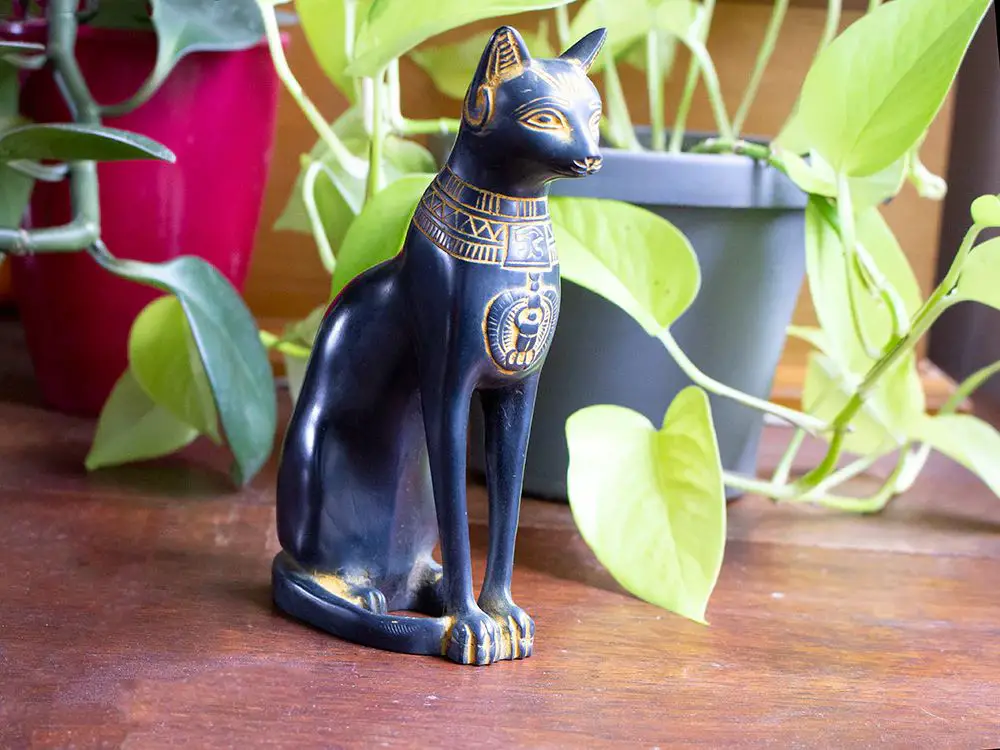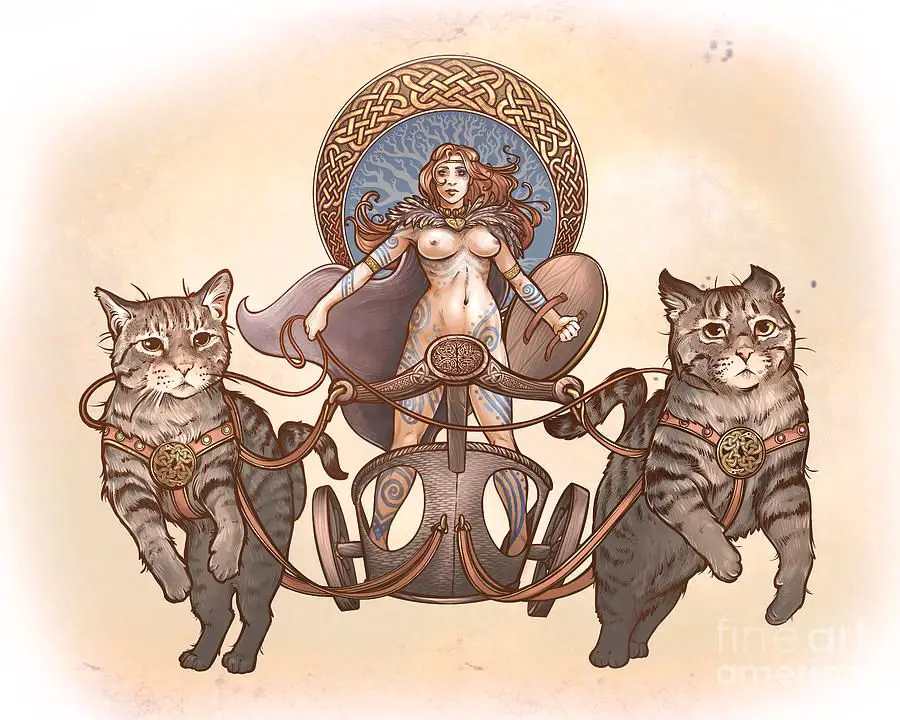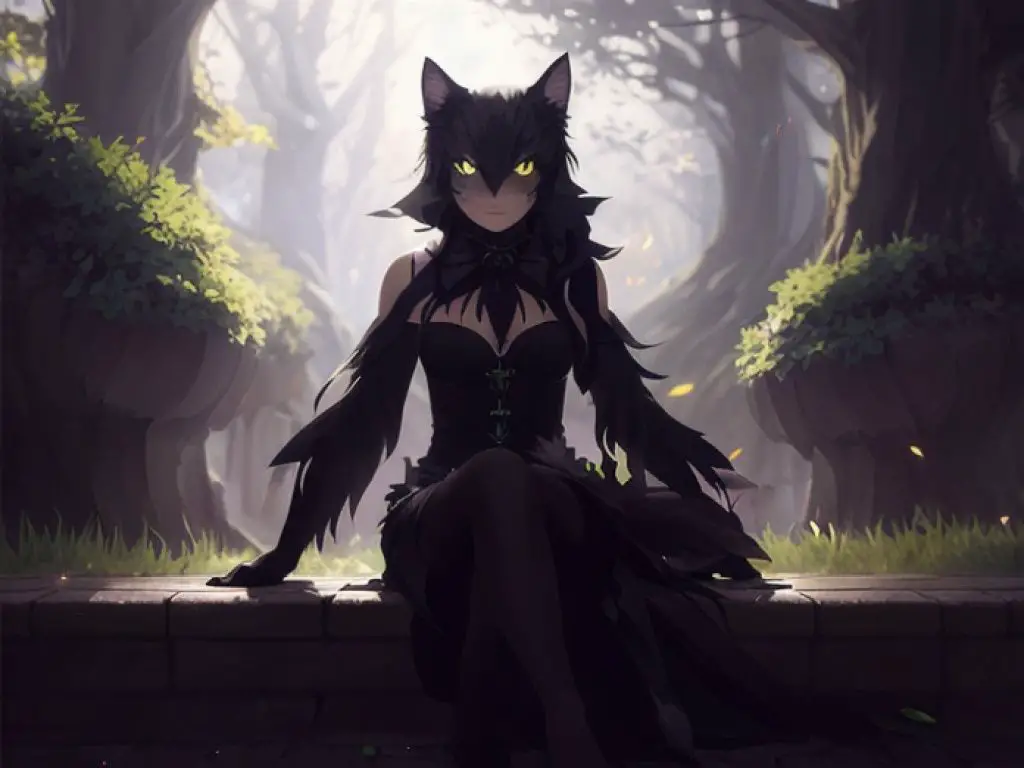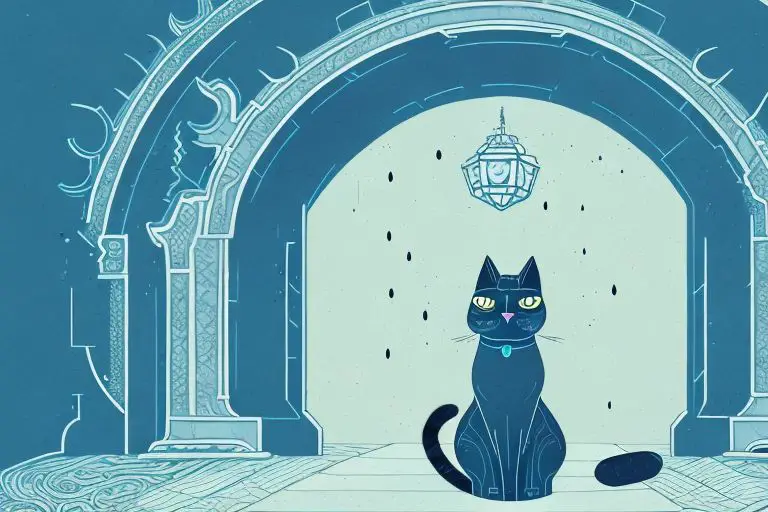Introduction: Understanding the Cat as Underworld Guardian
Humans have complex and deeply spiritual relationships with cats that date back millennia. Cats have a long history of being seen as spirits, gods, guardians, and even mystical familiars, depending on the culture. In many ancient mythologies and folklore, cats are portrayed as guardians and guides to the mysterious underworld – though what form that underworld takes can vary dramatically.
To understand how the cat came to be seen as an underworld guardian, we must explore the history and symbolism of the cat across cultures and spiritual traditions throughout time. This article will examine cats in ancient Egypt, Norse mythology, witchcraft, and more to uncover how the cat became a mystical creature associated with death, the afterlife, and the great beyond.
Cats in Ancient Egypt
In ancient Egypt, cats were revered as gods and associated with protection. The Egyptians worshipped cats, especially the goddess Bastet, who had the body of a woman and the head of a cat. Bastet was the goddess of protection, fertility, and motherhood. Cats were so sacred that harming or killing a cat was a crime punishable by death in ancient Egypt. Egyptians mummified cats and dedicated them to Bastet as offerings. Cats were seen as protectors against evil spirits and serpents. The Egyptians believed cats guarded the underworld and protected the home from evil. Cats were associated with the sun god Ra and the underworld. According to Egyptian mythology, cats emerged from the sun god’s eye at dawn. Their sun-like eyes were thought to repel darkness. Egyptians believed cats could protect people both in life and in death, which is why mummified cats were often buried with their owners.

Sources:
https://www.youtube.com/watch?v=JR06fe9SGR8
https://mckitterick.wordpress.com/2018/10/14/thefingerfuckingfemalefury-catbountry/
Bastet – Egyptian Cat Goddess
Bastet was an ancient Egyptian goddess who was depicted as a cat or a woman with the head of a cat (KidsKonnect, 2023). She was considered the goddess of protection, joy, dance, music, family, pregnant women, childbirth, fertility, and protector of the home. Bastet was originally lioness-headed but later changed into the cat symbolizing hearth and home (KidsKonnect, 2023).
Bastet’s name translates to “she of the ointment jar,” linking her to protection and protective rituals (KidsKonnect, 2023). She was known as a gentle protective goddess and was the daughter of Ra, the sun god. Her cult center was in Bubastis in Lower Egypt.
Bastet was so popular that thousands of mummified cats were found buried at her cult center. Killing a cat in ancient Egypt, even accidentally, resulted in death so cats were revered (KidsKonnect, 2023). To ancient Egyptians, the cat embodied Bastet’s playfulness, grace, affection for family, and receptivity.
Freya’s Cats
In Norse mythology, Freya was the goddess of love, beauty, war, and death. She was associated with cats, who pulled her chariot. According to myth, Freya rode in a chariot driven by two cats across the night sky. This is why some associated her with the constellation Orion.

As the Norse goddess of love, Freya was associated with beauty, magic, and attraction. Cats reflected these qualities as elegant, mysterious, and sensual creatures. Freya would lend her cloak of falcon feathers to other gods to transform themselves, similar to how cats were believed to shapeshift in folklore. Her connection to cats highlights her role as an important and powerful goddess in Norse mythology.
Images of Freya in her cat-drawn chariot evoke a sense of magic and mysticism. The motif of the Norse love goddess riding across the sky in a cat-pulled chariot captures the imagination and reveals why cats were seen as otherworldly creatures associated with the divine feminine.
Sources:
https://society6.com/product/freya-driving-her-cat-chariot_framed-mini-art-print
https://society6.com/product/freya-driving-her-cat-chariot_metal-print
Cats in Witchcraft
Cats have long been associated with magic and witchcraft. In medieval Europe, cats were thought to be the familiars of witches. It was believed that witches could transform themselves into cats and that black cats assisted witches in their practice of magic and evil [1].

Familiars were believed to be supernatural entities that assisted witches in their magical workings. Cats were the most common familiars and were thought to possess magical abilities themselves. It was thought that witches could see through the eyes of their cat familiars and that cats could be sent out to do a witch’s bidding [1].
During the witch trials in Europe and America, the discovery of a cat familiar was taken as evidence that the accused was a witch. However, some cultures believed that cats protected against evil spirits and witchcraft rather than assisting witches.
Cat Symbolism
Cats have long been associated with mystery, magic, and intuition. In many cultures, cats are seen as having a special sixth sense and being able to see into the spirit world. Their mercurial nature, independence, and night-time prowling have linked them to the moon, the occult, and the feminine divine. Cats have a long history as being both revered and feared for their supernatural talents.
The Egyptians considered cats to be sacred animals, with the goddess Bastet often depicted with the head of a cat. Bastet was seen as a protector goddess, and cats embodied her maternal, protective instincts. Black cats in particular were believed to be Bastet’s favored children and acted as her emissaries on earth. Cats were so beloved in ancient Egypt that killing one, even accidentally, incurred the death penalty.
In Norse mythology, the goddess Freya was said to ride a chariot pulled by cats. Her connnection to cats reinforced her mystical qualities as a shape-shifting sorceress. Witches were also often depicted with black cats as their familiars or companions, emphasizing the perception of cats as magical, uncanny creatures.
This mystical symbolism continues today, with cats seen as guardians of the spiritual realm. They are thought to be able to see spirits and sense energies beyond normal perception. Cats serve as protectors and guides along the threshold between worlds, keeping watch over homes and guarding sacred spaces.
Black Cats
Black cats are surrounded by superstition and mystery. They are often associated with bad luck, especially in Western cultures. Seeing a black cat crossing your path is considered an omen of misfortune by some. This perception may stem from old beliefs associating black cats with witchcraft.
During the Middle Ages in Europe, black cats were linked to witches and evil. People believed that witches could transform into black cats and back again. Black cats were also thought to be witches’ familiars or demonic animals that aided them in their dark magic. As a result, many black cats were killed during witch hunts. This further reinforced their association with misfortune and evil.
The fear and superstition surrounding black cats persists today in some forms. However, most rational people do not subscribe to these old superstitions. Black cats are just as adorable and loving as cats of any other color. Their unfair stigma is merely a product of outdated myths and bias.
Cats in Folklore
Cats have long been featured in myths, legends, and folklore across many cultures. In Celtic mythology, the Cat Sìth was a supernatural cat the size of a dog with a white spot on its chest. It was believed to be a faerie creature or witch that could shapeshift into a cat nine times 1. Black cats in particular are part of many superstitions and folklore. In some regions, they were considered good luck, while in others they were a sign of bad luck or even demonic spirits. For example, in the British Isles, it was believed that black cats could predict or even cause death. Seafarers’ wives would keep black cats to prevent their husbands from dying at sea.
Ancient Egyptians revered cats, especially black cats, considering them to be sacred animals. Bastet, the cat-headed Egyptian goddess, was the deity of protection, fertility, and motherhood. Cats were so highly valued that killing one, even accidentally, could result in the death penalty 2. In Norse mythology, the goddess Freya used a chariot pulled by two large gray cats given to her by Thor. Cats were closely linked to magic and witchcraft in the Middle Ages, resulting in them being persecuted by the Catholic church.
Underworld Guardians
The folklore association between cats and the underworld dates back centuries. In Scottish mythology, the “Grimalkin” referred to a cat who was believed to be a guardian of the entrance to the underworld. The name “Grimalkin” itself comes from the Scottish words “grimy” and “malkin” meaning an old, female cat.[1]

In Celtic and British folklore more broadly, cats were viewed as supernatural creatures associated with witchcraft and the world of the dead. Black cats in particular were thought to be actual witches in disguise or familiars of witches. Their mysterious nighttime wandering and uncanny abilities contributed to beliefs that cats guarded the gates to the spirit realm.[2]
The conception of cats as underworld guardians also appeared in ancient Egypt. The cat goddess Bastet was worshipped as the protector of the underworld. Cats were mummified and buried with their owners to guide and accompany them in the afterlife.[3]
Conclusion
In conclusion, throughout history cats have developed a mystical connection with the underworld in mythology, folklore, and ancient religions. Black cats in particular are seen as guardians of the underworld or as omens of death and misfortune. This perception stems from ancient Egypt, where cats were revered and associated with gods and goddesses like Bastet. Myths from Norse legends also depict the goddess Freya’s chariot being pulled by cats, granting them an underworld symbolism.
While in reality cats do not have any supernatural powers, their long-standing associations with witchcraft, magic, and the afterlife have cemented their status as mysterious creatures of the night. Their stealthy movements, nocturnal nature, and inscrutable gaze likely contributed to myths about their otherworldly abilities. These beliefs persist in superstitions about black cats as harbingers of doom. Nonetheless, cats continue to captivate our imagination as creatures that straddle the line between this world and the next.

